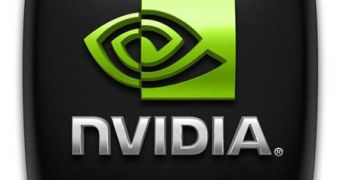This week seems to be rather a gray one for Nvidia, as the latest stock changes show that the company has received a powerful hit, and its stocks went down with about 25% when news about its defective graphics card began spreading around. The blow came after the company announced its investors that "significant quantities" of previous-generation graphics cards experienced failings at "higher than normal rates," and the price pressure made Nvidia reconsider its Q2 estimates. The stocks have fallen down to $13.56.
Nvidia did not specify which products were faulty, but did say that GPUs and "media and communications processors" are included. It seems that covering the repairing and replacing the defective chips will make the Santa Clara company take a $150M to $250M charge against earnings the next quarter.
It appears that Nvidia has already made a move by providing its laptop makers with an updated GPU driver which kicks in fans sooner to reduce "thermal stress" on the GPU. The company also announced that it is already in talks with suppliers about being reimbursed for the defective parts. What interests us most is what chips are faulty, even if solutions are found.
While hoping for better, the company was compelled to announce that its revenue for Q2 will be lower than expected, and that is under $ billion. It seems that the final number will be situated somewhere between $875 million and $950 million. According to Nvidia, this state of fact occurred due to the delay of some of its chipsets, a worldwide weakness in the end-market, as well as the cutting prices for some GPUs it had to undergo in the competition against Advanced Micro Devices.
Nvidia's CEO Jen-Hsun Huang made a positive statement on the issue of defective chips, saying that the "higher than normal failing rates" taught the company a lesson and that such issues would be closely addressed in the future through a closer work with OEMs.

 14 DAY TRIAL //
14 DAY TRIAL //